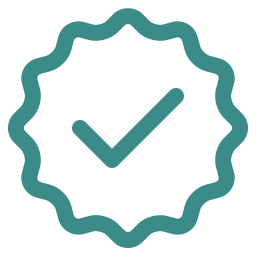Soothing Sciatica: The Role of Pilates Equipment in Relieving Pain and Promoting Healing
Are you tired of the constant pain and discomfort caused by sciatica?
Look no further.
Pilates equipment is here to bring you relief and promote healing.
By targeting the root cause of your sciatica and strengthening your core, Pilates can alleviate your pain and improve your overall well-being.
In this article, we will explore the essential Pilates equipment that can help you find long-term relief from sciatica.
Get ready to say goodbye to pain and hello to a healthier, more active life.
Understanding Sciatica: Causes, Symptoms, and Treatment Options
You may experience significant discomfort and limited mobility when dealing with sciatica.
Sciatica is a condition that occurs when the sciatic nerve, which runs from the lower back down through the hips and buttocks, becomes irritated or compressed.
This can lead to radiating pain, numbness, and tingling sensations that extend down the leg.
The most common cause of sciatica is a herniated disc in the spine, but it can also be caused by spinal stenosis, degenerative disc disease, or muscle imbalances.
When it comes to treating sciatica, incorporating Pilates exercises on your AeroPilates into your routine can be highly beneficial.
Pilates focuses on strengthening the core muscles, improving flexibility, and promoting proper alignment and posture.
These exercises can help alleviate the pressure on the sciatic nerve and provide relief from pain.
Specific Pilates exercises that target the lower back, hips, and buttocks are particularly effective for individuals with sciatica.
These exercises include the pelvic tilt, hip rolls, and leg circles.
The gentle stretching and strengthening movements of Pilates can help reduce inflammation, improve blood flow, and increase flexibility, all of which contribute to healing and pain relief.
In addition to Pilates exercises, it's important to incorporate other treatment options for sciatica, such as physical therapy, chiropractic adjustments, and pain medication if necessary.
It's also crucial to consult with a healthcare professional before starting any new exercise program, especially if you have a pre-existing condition or are experiencing severe pain.
The Benefits of Pilates for Sciatica: How It Works
Experience the many benefits when you buy Pilates Reformer for sciatica as it works to alleviate pain and promote healing.
Pilates is a form of exercise that focuses on strengthening the core muscles, improving flexibility, and enhancing overall body alignment.
When it comes to sciatica pain, Pilates can be particularly beneficial.
Here's how it works:
- Strengthening the core
Pilates exercises on a Peak Pilates target the deep abdominal muscles, including the transverse abdominis and the pelvic floor muscles.
By strengthening these muscles, Pilates helps stabilize the spine and pelvis, reducing pressure on the sciatic nerve.
- Improving flexibility
Tight muscles, such as the hamstrings and hip flexors, can contribute to sciatica pain.
Pilates incorporates stretching exercises that can help increase flexibility in these areas, relieving tension and reducing pain.
- Enhancing body alignment
Poor posture and misalignment can exacerbate sciatica symptoms.
Pilates focuses on proper body alignment, teaching you how to engage the right muscles and maintain a neutral spine.
By improving posture, Pilates can help alleviate pressure on the sciatic nerve.
- Promoting mind-body connection
Pilates emphasizes the mind-body connection, encouraging you to be mindful of your movements and focus on proper breathing techniques.
This increased awareness can help you better control your body movements and reduce the risk of aggravating your sciatica pain.
Incorporating Pilates exercises for sciatica into your routine can provide significant relief and promote healing.
However, it's important to consult with a qualified Pilates instructor or healthcare professional before starting any new exercise program, especially if you have existing health conditions.
They can guide you in choosing the appropriate exercises and ensure you perform them correctly to maximize their benefits.
Essential Pilates Equipment for Sciatica Relief: A Comprehensive Guide
Get the most out of your Pilates workouts for sciatica relief by using essential equipment like the Align Pilates C2 Pro Reformer which is designed to support and target specific areas of your body.
Pilates is known for its ability to strengthen and stretch the muscles, improve flexibility, and promote overall body alignment.
When it comes to sciatica, using the right equipment can further enhance the benefits of Pilates and provide additional support to the affected areas.
One of the most commonly used pieces of equipment in Pilates is the reformer.
The reformer consists of a sliding carriage, springs, and various attachments that allow for a wide range of exercises.
For sciatica relief, the reformer can be beneficial as it provides support to the spine while engaging the core muscles.
This helps to alleviate pressure on the sciatic nerve and promote healing.
Another piece of equipment that can be helpful for sciatica relief is the Pilates Wunda chair.
The chair is designed to target specific areas of the body, including the hips, glutes, and hamstrings.
By strengthening these muscles, it can help to stabilize the pelvis and alleviate sciatic pain.
Additionally, the chair can be used for seated exercises, which are beneficial for individuals with sciatica as they put less pressure on the lower back.
While Pilates is generally considered good for sciatica, there are some exercises that should be avoided.
These include exercises that involve excessive bending or twisting of the spine, as well as exercises that put pressure on the lower back.
It's important to work with a qualified Pilates instructor who can guide you through a customized program that's safe and effective for your condition.
Strengthening the Core: Effective Pilates Exercises for Sciatica Relief
To effectively alleviate sciatica pain and promote healing, incorporate Pilates exercises that strengthen your core.
Strengthening the core muscles can help improve posture, stability, and overall body alignment, reducing the pressure on the sciatic nerve.
Here are some effective Pilates exercises that target the core and provide relief from sciatica pain:
- Pelvic Curl
Lie on your back with your knees bent and feet flat on the floor.
Inhale to prepare, then exhale as you lift your hips off the mat, one vertebra at a time.
Hold this position for a few seconds, then slowly lower back down. Repeat 10 times.
- Single Leg Stretch
Lie on your back with your knees bent and feet off the floor.
Bring one knee towards your chest while extending the other leg.
Switch legs in a scissor-like motion, keeping your core engaged throughout. Repeat 10 times on each side.
- Swan Dive
Lie on your stomach with your hands by your shoulders.
Inhale and lift your upper body off the mat, keeping your pelvis grounded.
Exhale as you lower back down. Repeat 10 times.
- Side Plank
Start by lying on your side, propped up on your forearm.
Lift your hips off the mat, creating a straight line from your head to your heels.
Hold for 30 seconds, then switch sides.
By incorporating these Pilates exercises into your routine using BASI Systems Reformer, you can strengthen your core muscles and alleviate sciatica pain.
These exercises not only target the source of the pain but also help improve flexibility and mobility, allowing for better overall spinal health.
In the next section, we'll explore how Pilates equipment can be used to increase flexibility and mobilize the spine.
Increasing Flexibility: Pilates Equipment for Stretching and Mobilizing the Spine
To improve your flexibility and mobilize your spine, Pilates equipment like the V2 Max Reformer can be used effectively.
Pilates exercises are known for their ability to stretch and strengthen the muscles, and the equipment takes the benefits to the next level.
One popular piece of Pilates equipment for increasing flexibility is the reformer.
The reformer consists of a sliding carriage, springs, and straps that allow for a wide range of movements.
By lying on the carriage and using the straps and springs, you can perform exercises that stretch and mobilize your spine in different directions.
The reformer is especially effective in targeting the muscles of the back, hips, and shoulders, which are essential for maintaining a healthy and flexible spine.
The sliding carriage allows for smooth and controlled movements, while the springs provide resistance to challenge your muscles and improve your flexibility over time.
With the reformer, you can perform exercises like the leg circles and the spinal twist, which specifically target the muscles of the spine and improve its mobility.
Another piece of Pilates equipment that can help increase flexibility is the Cadillac.
The Cadillac consists of a raised platform with various bars, straps, and springs attached to it.
It allows for a wide range of exercises that stretch and mobilize the spine in different ways.
For example, you can use the bars and straps to perform exercises that stretch the muscles of the back and shoulders, such as the backbend and the chest opener.
In addition to the reformer and the Cadillac, there are other Pilates equipment options that can help increase flexibility and mobilize the spine.
The Wunda Chair, for example, is a compact and versatile piece of equipment that allows for a variety of exercises targeting the core and the spine.
The ladder barrel is another option, providing a curved surface that supports the spine and allows for exercises that stretch and mobilize the back muscles.
Targeting Specific Areas: Pilates Equipment for Sciatica Pain in the Hips and Legs
For optimal relief from sciatica pain in your hips and legs, try incorporating specific Pilates equipment exercises into your routine.
These exercises are designed to target the specific areas that are affected by sciatica, helping to alleviate pain and promote healing.
Here are four Pilates equipment exercises that can help relieve sciatica pain in your hips and legs:
Reformer Leg Circles:
- Lie down on the reformer with your legs extended.
- Attach the foot straps to your ankles and lift your legs off the carriage.
- Begin circling your legs in a controlled and smooth motion, focusing on engaging your core and keeping your hips stable.
- This exercise helps to strengthen the hip muscles and improve flexibility, reducing pressure on the sciatic nerve.
Wunda Chair Hip Rolls:
- Sit on the Wunda Chair with your feet on the pedal.
- Press the pedal down and roll your hips back, creating a C-curve with your spine.
- Hold this position for a few seconds, then release and repeat.
- This exercise helps to stretch and strengthen the muscles in your hips, relieving tension and reducing sciatica pain.
Cadillac Leg Springs:
- Lie down on the Cadillac with your legs extended.
- Attach the leg springs to your ankles and lift your legs off the mat.
- Slowly lower your legs towards the mat, then lift them back up.
- This exercise targets the muscles in your legs and hips, improving strength and flexibility while reducing pressure on the sciatic nerve.
Ladder Barrel Spine Stretch:
- Sit on the Ladder Barrel with your feet against the ladder rungs and your hands behind your head.
- Slowly roll back onto the barrel, allowing your spine to curve over it.
- Hold this position for a few seconds, then roll back up.
- This exercise helps to stretch and mobilize the spine, relieving pressure on the sciatic nerve and reducing pain in the hips and legs.
By incorporating these Pilates equipment exercises into your routine, you can target specific areas affected by sciatica and find relief from pain in your hips and legs.
Remember to always consult with a qualified Pilates instructor before starting any new exercise program, especially if you have existing health conditions or injuries.
Progressing Your Practice: Advanced Pilates Equipment for Long-Term Sciatica Relief
Are you ready to take your Pilates practice to the next level and incorporate advanced Pilates equipment for long-term sciatica relief?
As you progress in your journey towards healing and pain relief, integrating advanced equipment can provide additional support and challenge to your workouts.
These specialized tools target specific areas and help to strengthen and stretch the muscles responsible for sciatic nerve compression.
Let's explore some of the advanced Pilates equipment options that can aid in long-term sciatica relief.
One effective piece of equipment is the Pilates Reformer.
This versatile machine consists of a sliding carriage, springs, and pulleys, allowing for a wide range of exercises that can be modified to suit your needs.
The Reformer provides controlled resistance, helping to build strength in the core, hips, and legs while promoting proper alignment and spinal stabilization.
By incorporating exercises such as leg presses, footwork, and hip circles, you can strengthen and stretch the muscles surrounding the sciatic nerve, reducing compression and improving mobility.
Another useful tool is the Pilates Cadillac, also known as the Trapeze Table.
This apparatus features a variety of bars, straps, and springs that can be adjusted to target specific areas of the body.
The Cadillac provides a supportive surface for exercises that focus on spinal decompression, hip mobility, and core strength.
By utilizing movements such as leg springs, roll-downs, and standing leg presses, you can further alleviate sciatic nerve pain and improve overall function.
In addition to the Reformer and Cadillac, the Pilates Chair is another advanced piece of equipment that can aid in long-term sciatica relief.
This compact apparatus offers a variety of sitting, standing, and lying exercises that target the core, hips, and legs.
By incorporating movements such as step-ups, side splits, and pedal presses, you can further strengthen and stretch the muscles involved in sciatic nerve compression, promoting healing and long-term relief.
Incorporating advanced Pilates equipment into your practice can provide the necessary challenge and support to alleviate sciatica pain and promote healing.
Remember to always consult with a qualified Pilates instructor who can guide you through proper techniques and modifications based on your individual needs.
With dedication and consistency, you can progress towards long-term sciatica relief and a stronger, more resilient body.
Frequently Asked Questions
Can Pilates Cure Sciatica?
Pilates can be an effective method for relieving sciatica pain.
By strengthening your core muscles and improving your posture, Pilates helps to alleviate pressure on the sciatic nerve.
Additionally, the gentle stretching and controlled movements in Pilates can promote healing and flexibility in the affected area.
While Pilates may not cure sciatica completely, it can provide significant pain relief and improve your overall well-being.
It's important to consult with a healthcare professional before starting any new exercise program.
How Long Does It Take to See Results From Pilates for Sciatica Relief?
When it comes to seeing results from Pilates for sciatica relief, everyone's journey is unique. It's like planting a seed and waiting for it to grow.
Your commitment and consistency will determine how quickly you reap the benefits.
With regular practice, you may start noticing improvements in your pain levels and mobility within a few weeks.
Are There Any Specific Pilates Exercises That Should Be Avoided for Sciatica?
To avoid aggravating your sciatica during Pilates exercises, there are a few specific moves you should steer clear of.
Avoid any exercises that involve excessive flexion or forward bending of the spine, as this can put pressure on the sciatic nerve.
Additionally, movements that involve twisting or rotation of the spine should be approached with caution.
It's important to listen to your body and modify or skip any exercises that cause pain or discomfort.
Can I Do Pilates at Home Without Any Equipment to Relieve Sciatica Pain?
You can definitely do Pilates at home without any equipment to relieve sciatica pain.
Pilates exercises like gentle stretches, pelvic tilts, and knee-to-chest movements can all help alleviate the discomfort.
By focusing on strengthening your core muscles and improving flexibility, Pilates can promote healing and reduce sciatica symptoms.
Just remember to listen to your body and start slowly, gradually increasing the intensity of your workouts.
With consistent practice, you'll find relief and feel better in no time.
Are There Any Specific Modifications or Adaptations That Need to Be Made When Using Pilates Equipment for Sciatica Relief?
When using Pilates equipment for sciatica relief, there are specific modifications and adaptations that can be made to maximize the benefits.
The equipment, such as the reformer or the Cadillac, provides additional support and resistance to target and strengthen the muscles involved in relieving sciatic pain.
With the guidance of a trained instructor, you can adjust the equipment settings and use props like pillows or straps to customize your exercises and ensure proper alignment, promoting healing and alleviating pain.
Conclusion
In conclusion, incorporating Pilates equipment into your sciatica relief routine can be highly beneficial.
By strengthening your core, increasing flexibility, and targeting specific areas, you can alleviate pain and promote healing.
Just like a well-equipped toolbox helps a carpenter build a sturdy structure, Pilates equipment serves as your toolkit for overcoming sciatica.
So grab your gear, engage your muscles, and embark on a journey towards long-term relief and improved well-being.




